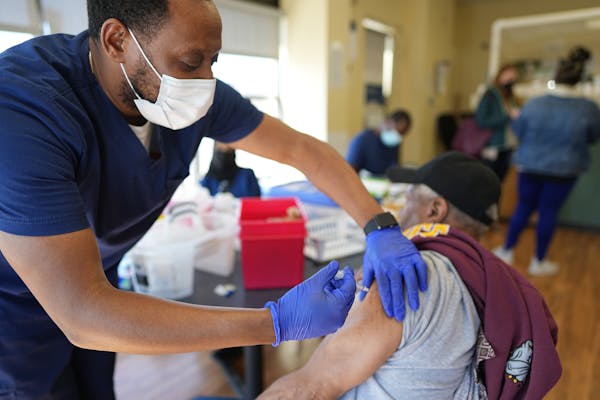Youth homelessness programs in Minnesota are receiving unprecedented increases in state funding starting this month following a session in which the Legislature nearly tripled spending over the next two years.
Lawmakers approved $41.5 million for the Homeless Youth Act state fund — $30 million more than the last biennium and the largest increase since funding began more than 15 years ago.
"It's historic," said Beth Holger, CEO of the Link, a Minneapolis-based nonprofit that provides housing, shelter and programs for sexually exploited teens and young adults.
Nonprofits had urged the DFL-controlled Legislature and Gov. Tim Walz to increase funding for a growing number of Minnesotans in need of housing assistance. The boost in funding for youth homelessness was part of a broader increase in state aid for homeless services for adults and families, which Matt Traynor of the Minnesota Coalition for the Homeless attributed to the diverse Legislature and the state's $17.5 billion surplus.
"The state really stepped up," he said. "This is by far the most the state has ever invested in homelessness."
For instance, the state Office of Economic Opportunity is receiving $245.6 million to address homelessness, which includes the added funding for the Homeless Youth Act. That's nearly $200 million more than the previous biennium and will increase youth housing, shelter beds and prevention efforts, said Tikki Brown, assistant commissioner of Children and Family Services at the Department of Human Services (DHS).
"With these investments, we're really building on an infrastructure that can really help provide the supports that people need," Brown said. "It's been many years of slow growth and just barely keeping up — and most often, not keeping up — with the needs of our homeless population, so this is really giving us a good leg up."
Wilder Research of St. Paul and the DHS released a report to legislators this year showing that an estimated 13,300 youth — defined by the state as anyone younger than 24 and unaccompanied by a parent — experience homelessness at some point during the year. The estimate is likely an undercount because of the transient population.
The report says that about 4,900 youth, who are disproportionally people of color, were homeless on any given night in 2018. With only about 100 youth shelter beds in the state, Holger said, that leaves many young adults without a safe place to stay.
The report also found that more than a third of homeless youth in 2018 couch-hopped or stayed with a friend or family member; nearly a quarter of them slept outside.
Brown said the data and new recommendations in the report "helped pave the way for what we're seeing right now, which is a significant, historic increase in funding."
The report, which legislators required to be completed during this year's session, also proposed an increase in flexible funding — which the Homeless Youth Act provides — and creation of a streamlined process to get help to youth sooner.
Existing different systems — such as foster care and homeless services — don't work together and were built on policies and practices of racism and oppression, according to the report.
"We know that youth homelessness can be eliminated, and that would require huge efforts — and a big step is the expanded funding," said lead researcher Christin Lindberg of Wilder Research, an arm of the Wilder Foundation.
The report cites increasing turnover and burnout among nonprofit workers, who face low wages and often traumatic and complex cases. "Without them, the system falls apart," Lindberg said.
Thanks to the additional $1.1 million the Link is receiving annually in state funding, the nonprofit is expanding programs and raising hourly minimum wages — from $20 to $22 for youth specialists and $25 for case managers.
While this year's unprecedented investment won't eliminate homelessness, advocates say it will significantly help reduce the number of teens and young adults in Minnesota who are without a safe place to stay.
"Crises are always going happen," Traynor said. "But at least now there's a safety net [and] we'll be able to respond in a much timelier and caring way that will help people get into housing."

Walz weighs in on canceled Minnesota cannabis license lottery: Litigation 'happens in every state'

Gov. Tim Walz calls for tougher Medicaid fraud penalties as FBI investigates autism centers

Minnesota abandons early cannabis lottery, retail pot sales likely to start later than expected

Minnesota's first lottery for cannabis business licenses delayed amid litigation



